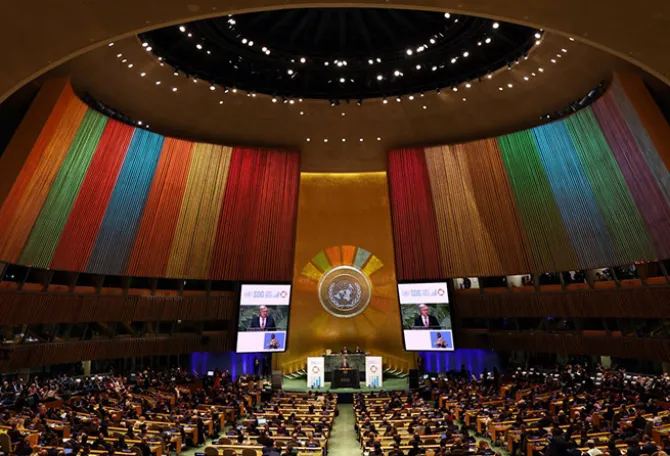-
CENTRES
Progammes & Centres
Location

The 2023 SDG summit, adopted a crucial political declaration, reaffirming the world’s commitment to the SDGs. The declaration assessed progress, acknowledged existing gaps and challenges, issued a call to action for steering the world toward the 2030 objectives and highlighted convergence on critical issues, including climate change, social protection, and the need to go beyond economic growth. To be sure, the SDG framework needs to improve—as its normative and one-size-fits-all approach, along with issues in compatibility between targets and their monitoring, adds complexity. Policymakers encounter evident contradictions and trade-offs when pursuing these goals. For instance, pursuing economic growth in SDG8 might hinder progress on the climate action in SDG13, as industrialization introduces new pollutants contrary to environmental goals.
Policymakers encounter evident contradictions and trade-offs when pursuing these goals.
These trade-offs are more pronounced in developing regions, which face significant constraints in financing the SDGs. Hence, this complex landscape necessitates a thoughtful approach to prioritize specific goals that align with each country's unique circumstances and challenges through a five-point agenda.
1. Tailored Approaches: Countries should prioritize a subset of SDGs based on national priorities, capacities, and immediate needs. Adopting a tailored approach allows nations to focus their resources and efforts on goals most relevant and achievable within their socio-economic context.
2. Leveraging Data: Data collection and monitoring are crucial to track the SDGs to provide the necessary information to evaluate progress, identify challenges, and make informed decisions. They enable countries to identify priority areas where they are lagging or facing challenges and are essential for governments to allocate resources effectively and address the most pressing issues.
3. Strategic Focus: Prioritization does not imply neglecting other goals, but instead strategically concentrating efforts where a country can make the most significant impact. This approach acknowledges the interconnectedness of the SDGs while recognizing the practical constraints that countries face.
4. Adaptable Strategies: The dynamic nature of global challenges requires flexible strategies. Countries may need to periodically reassess their priorities based on evolving circumstances and emerging issues. This flexibility ensures a responsive and practical approach to sustainable development.
5. Global Cooperation: While countries prioritize specific SDGs, international cooperation remains paramount. Collaboration and information sharing enable nations to learn from each other's successes and challenges, fostering a collective effort towards achieving the overarching vision of sustainable development.
Prioritizing SDGs is a strategic necessity, especially when the current trajectory indicates the world is not on track to achieve all seventeen goals. A targeted and context-specific approach ensures that efforts are concentrated where they are most needed and can significantly advance sustainable development.
This commentary originally appeared in Council on Foreign Relations.
The views expressed above belong to the author(s). ORF research and analyses now available on Telegram! Click here to access our curated content — blogs, longforms and interviews.

Soumya Bhowmick is a Fellow and Lead, World Economies and Sustainability at the Centre for New Economic Diplomacy (CNED) at Observer Research Foundation (ORF). He ...
Read More +